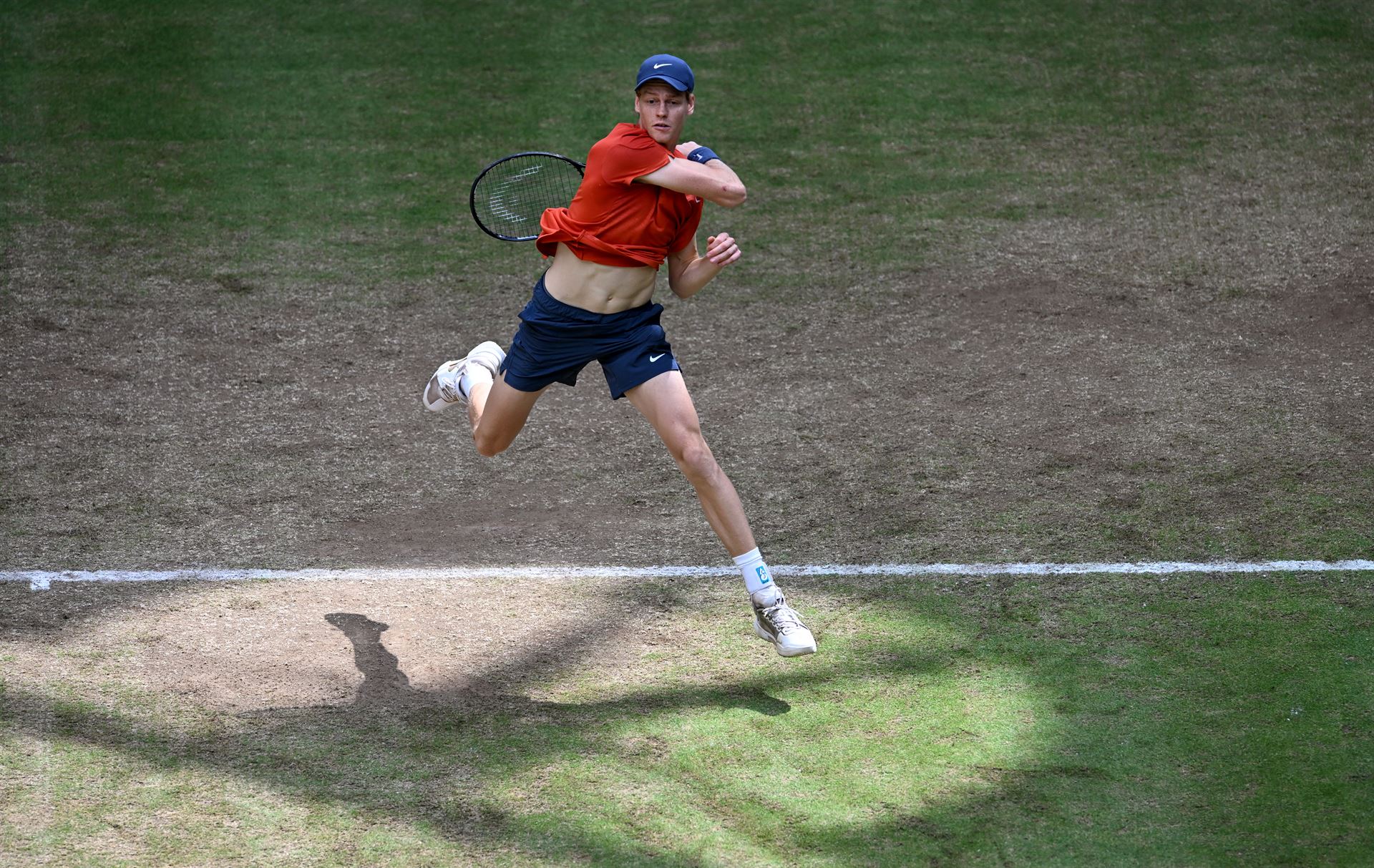
MILAN - Millions of Italians, long known for their obsession with soccer, are about to find themselves torn between following their beloved Azzurri at Euro 2024 and tuning into Wimbledon to root for Jannik Sinner, Italy's first top seed in the tournament's history.
Sinner, who this month snatched the world number one ranking from Novak Djokovic, geared up perfectly for the challenge when he won his first grasscourt trophy at Halle in Germany last weekend.
READ MORE: Sinner beats Hurkacz to win first title on grass at Halle Open
Yet while the ginger-haired 22-year-old is grabbing most of the headlines, he is only the tip of the iceberg in a much broader Italian tennis renaissance, with a flourishing grass roots movement and seven men in the world's top 60.
That strength in depth is matched only by the United States, which has the same number of top-60 players, while France and Russia boast five and Argentina four.
The Italians on average are younger, however, ensuring a pool of talent for years to come. Of the nine Italian men in the top 100, six are between 20 and 23 years old.
The turnaround has been dramatic for a nation that has traditionally struggled to produce top tier performers. Until Sinner won this year's Australian Open no Italian man had lifted a Grand Slam trophy since Adriano Panatta in Paris in 1976.
READ MORE: Sinner survives Struff test to reach Halle Open semis
In 2010, the country still had no men in the world's top 50 and only three in the top 100.
So what is Italy's secret?
Angelo Binaghi, who has headed the Italian tennis federation (FITP) since 2001, pointed to reforms over the last 10-15 years to decentralize the coaching system and offer more financial, technical and psychological support to young talent.
Close to home
This involved ditching the previous system in which promising youngsters, often under the age of 16, were sent to be coached at two national training centers.
Instead, budding stars are now left to develop with their own coaches at home, backed up by a network of intermediate training centers around the country, while private coaches are advised and kept abreast of new methods by the federation's "super-coaches".
"Everything is happening faster than we could have imagined," Binaghi told Reuters. "Countries that were much more developed than us in the past, like France, have come here numerous times to study what we are doing."
Michelangelo dell'Edera, Italy's Davis Cup team manager and the head of the FITP's Under-16 training sector, said the new decentralized approach had united coaches, the federation, private clubs, families and players.
READ MORE: China's Zhang seeded at Wimbledon despite losing Halle semis
"It's been extraordinary, and somewhat unusual for Italian people who are individualistic by nature," he said.
The restructuring of the coaching system has accompanied a surge in grass-roots participation, fuelled by high profile success stories like Sinner's Australian Open triumph, Italy's 2023 Davis Cup victory and Matteo Berrettini becoming the first Italian to reach the Wimbledon final in 2021.
The number of registered club players has leapt from around 129,000 in 2001 to 820,000 last year, making tennis the second most popular participation sport in the country after soccer.
READ MORE: Hurkacz downs Zverev to set up Halle final with Sinner
"We took over Italian tennis when it was on the brink of bankruptcy, today I believe we can say that we are at the top of the world," Binaghi said.
The FITP now has its sights on exceeding 1 million registered players, he added, meaning more cash for the federation which in turn leads to more facilities, coaching centers and tournaments.
Challenger tournaments
Italy is now the country that hosts the largest number of "challenger" tournaments, competitions below the top ATP level which allow young players to gain experience.
A growing number of these are given wildcards, a system by which the federation buys entry into challenger tournaments for promising talents who would otherwise not have qualified.
"In the last eight years we have used these wild cards as an experience accelerator," said Filippo Volandri, a former world top-25 player and Italy's national technical director.
READ MORE: Zhang Zhizhen writes new history by roaring into Halle ATP semis
Federico Cina, a 17-year-old Sicilian who has benefited from wildcards and the new training set-up, is hoping to win the junior title at Wimbledon while Sinner battles for the senior prize.
Coached by his father in his home town of Palermo, Cina is number five in the world junior rankings and has acted as an occasional training partner for top players like Spain's Carlos Alcaraz and Russia's Andrey Rublev.
He said he enjoyed being able to train at home rather than transfer to a national centre and the FITP has offered support for all aspects of his game.
"The financial backing helps a lot, then there are people who prepare us and follow us at tournaments, and they also gave me a mental coach who helps me to handle the key moments in matches," he said.


